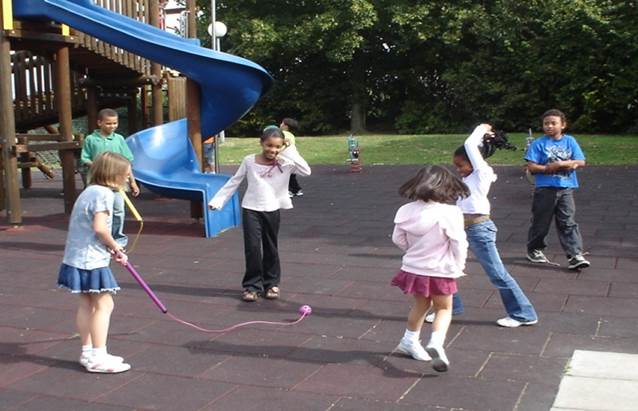| Dr. Kaczynski is PI (along with Dr. Sonja Wilhelm Stanis from the University of Missouri) of the ongoing Kansas City Parks and Physical Activity Project (KCPAPAP). From 2008 to 2011, the KCPAPAP involved four related projects, each of which is described briefly below. The first three projects are summarized in a report produced for our community partner, the Kansas City Missouri Parks and Recreation Department. The fourth project is described in a later report to the Health Care Foundation of Greater Kansas City. For more information about any of these projects or other activities related to the KCPAPAP, please feel free to contact Dr. Kaczynski or Dr. Wilhelm Stanis via the methods below: | |
| Andrew T. Kaczynski, PhD Department of Health Promotion, Education & Behavior Arnold School of Public Health University of South Carolina Discovery 1 915 Greene Street, Room 529 Columbia, SC 29201 803-777-7063 atkaczyn@mailbox.sc.edu Website  |
Sonja A. Wilhelm Stanis, PhD Department of Parks, Recreation, & Tourism School of Natural Resources University of Missouri 105e Anheuser-Busch Natural Resources Bldg Columbia, Missouri, 65221 573-882-9524 sonjaws@missouri.edu Website |
|
Investigating Park Environments and Physical Activity The purpose of this pilot study was to employ a multi-method approach (observations, surveys, and audits) to examine the role of park environments in facilitating physical activity and factors that influence park-based physical activity participation. Specifically, the primary objectives were to:
This component of the KCPAPAP is described further in the Kansas City Parks and Physical Activity Project final report. It also resulted in numerous publications and presentations, several of which are listed below: Besenyi, G.M., Kaczynski, A.T., Wilhelm Stanis, S.A., & Vaughan, K.B. (2013). Demographic variations in observed energy expenditure across park activity areas. Preventive Medicine, 56, 79-81. Kaczynski, A.T., Wilhelm Stanis, S.A., Besenyi, G.M., & Child, S. (2013). Differences in youth and adult physical activity in park settings by sex and race/ethnicity. Preventing Chronic Disease, 10, 42. Kaczynski, A.T., Wilhelm Stanis, S.A., Hastmann, T., & Besenyi, G.M. (2011). Variations in observed park physical activity intensity level by gender, race, and age: Individual and joint effects. Journal of Physical Activity and Health, 8(S2), 150-161 |
|
|
Development of a Community Stakeholder Park Audit Tool
Click on the following links to view the Community Park Audit Tool (CPAT) and guidebook: This study was presented as an oral plenary presentation at the Active Living Research Eighth Annual Conference in 2011 and later published in the American Journal of Preventive Medicine: Kaczynski, A.T., Wilhelm Stanis, S., & Besenyi, G. (2011). Development and testing of a community stakeholder park audit tool. Plenary presentation at the Active Living Research Eighth Annual Conference, February 22-24, 2011, San Diego, CA. Kaczynski, A.T., Wilhelm Stanis, S.A., & Besenyi, G.M. (2012). Development and testing of a community stakeholder park audit tool. American Journal of Preventive Medicine, 42(3), 242-249. A more recent project has begun to develop and test a mobile app version of the Community Park Audit Tool (eCPAT). A description of that study can be found here. |
|
|
Kansas City Neighborhood and Park Study The purpose of the Kansas City Neighborhood and Park Study (KCNPS) was to examine how the proximity, features, quality, and neighborhood environments around parks influence physical activity and park use among children and adults. The KCNPS involved detailed GIS mapping and audits of all Kansas City, Missouri parks as well as a lengthy survey of 893 households across Kansas City. Some of the key research questions explored included:
The KCNPS is described further in the Kansas City Parks and Physical Activity Project final report and also within several recent presentations and publications: Besenyi, G.M., Kaczynski, A.T., Wilhelm Stanis, S.A., Bergstrom, R., Oestman, K.B., & Colabianchi, N. (2016). Sex differences in the relationship between park proximity and features and youth physical activity. Children, Youth and Environments, 26(1), 56- Kaczynski, A.T., Besenyi, G.M., Wilhelm Stanis, S.A., Koohsari, M.J., Oestman, K.M., Bergstrom, R., Potwarka, L.R., & Reis, R.S. (2014). Are park proximity and park features related to park use and park-based physical activity among adults? Variations by multiple socio-demographic characteristics. International Journal of Behavioral Nutrition and Physical Activity, 11, 146. Besenyi, G.M., Kaczynski, A.T., Wilhelm Stanis, S.A., Bergstrom, R.D., Lightner, J.S., & Hipp, J.A. (2014). Planning for health: A community-based spatial analysis of park availability and chronic disease across the lifespan. Health and Place, 27, 102-105. Kaczynski, A.T., Koohsari, M.J., Wilhelm Stanis, S.A., Bergstrom, R., & Sugiyama, T. (2014). Association of street connectivity and road traffic speed with park usage and park-based physical activity. American Journal of Health Promotion, 28(3), 197-203. Westley, T., Kaczynski, A.T., Wilhelm Stanis, S., & Besenyi, G.M. (2013). Parental perceptions of neighborhood safety and youth health behaviors: Differences by child gender, age, and household income. Children, Youth, and Environments, 23(3), 118-147. Bai, H., Wilhelm Stanis, S.A., Kaczynski, A.T., & Besenyi, G.M. (2013). Perceptions of neighborhood park quality: Associations with physical activity and BMI. Annals of Behavioral Medicine, 45(S1), 39-48.
|
|
|
Parks and Environmental Justice in Kansas City, Missouri
This study was also presented at the Active Living Research Ninth Annual Conference in 2012 and the International Society for Behavioral Nutrition and Physical Activity Annual Meeting in 2012 and later published in Annals of Behavioral Medicine: Vaughan, K.B., Kaczynski, A.T., Wilhelm Stanis, S.A., Bergstrom, R., & Besenyi, G.M. (2012). Environmental justice and physical activity: Examining disparities in park availability and features across Kansas City, Missouri. Presented at the Active Living Research Ninth Annual Conference, March 12-14, 2012, San Diego, CA. Vaughan, K.B., Kaczynski, A.T., Wilhelm Stanis, S.A., Bergstrom, R., Besenyi, G.M., & Heinrich, K.M. (2012). Deprivation amplification in Kansas City, Missouri: Exploring differences in park quantity and quality by income and race. Presented at the International Society of Behavioral Nutrition and Physical Activity Annual Meeting, May 23-26, 2012, Austin, TX Vaughan, K.B., Kaczynski, A.T., Wilhelm Stanis, S.A., Besenyi, G.M., Bergstrom, R., & Heinrich, K.M. (2013). Exploring the distribution of park availability, features, and quality across Kansas City, Missouri by income and race/ethnicity: An environmental justice investigation. Annals of Behavioral Medicine, 45(S1), 28-38. Parsons, A.A., Besenyi, G.M., Kaczynski, A.T., Wilhelm Stanis, S.A., Blake, C., & Barr-Anderson, D.J. (2015). Investigating issues of environmental injustice in neighborhoods surrounding parks. Journal of Leisure Research, 47(2), 285-303. |
|





